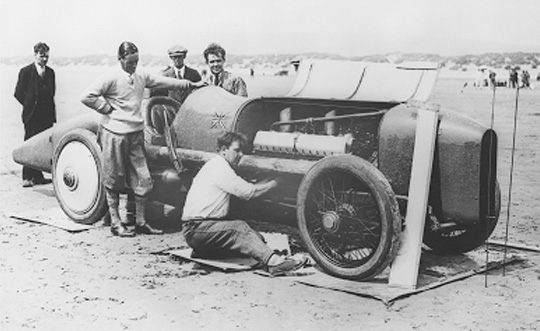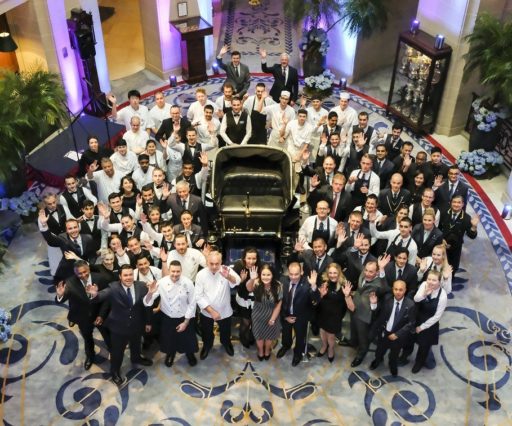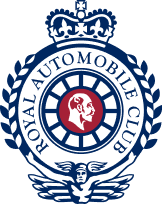Sir Malcolm Campbell
Awarded the Segrave Trophy twice:
1933 – for raising the Land Speed Record to 272.11mph in Blue Bird.
1939 – for setting the new water speed record of 141.74mph at Coniston Water in Blue Bird K4. The Segrave Medal was also awarded, to Peter du Cane for design and construction of Blue Bird K4.

1933
‘Bluebird’ wasn’t one single vehicle but a long series of specially designed cars and motorboats used to attack world speed records. The name was the lucky moniker of speed addict Sir Malcolm Campbell, the scion of a wealthy London diamond-dealing family who began his car-racing exploits in 1910. The battle for world Land Speed Record honours entered an extraordinary new phase in 1922 when aircraft engines became the favoured method to push the boundaries of speed. One such machine was a Sunbeam with an 18.3-litre V12 aero engine from a Shorts seaplane, which Malcolm acquired from Sunbeam in 1924, repainted blue, and baptised as his first Bluebird. At Pendine Sands, South Wales in September 1924, this 350bhp car/plane hybrid blasted Campbell to a world record at 146.16mph. The same car later made him the first man on earth to drive at more than 150mph, but he had his sights set on much more than that, and needed a car designed to his precise specification. By 1931 an all-new Bluebird featured a truly fearsome, supercharged, 950bhp Napier V12 engine. With this Campbell took the record to 246.09mph and was knighted for his feat. There was still no stopping him, and in 1932 “Sir Malc” became the first driver ever to surpass 250mph, to the 272.11mph that brought him the Segrave Trophy.
1939
Malcolm Campbell was a second-time winner of the Segrave Trophy just before the outbreak of World War II, this time for a speed achievement on water. In fact, this was the fourth time in two years that he’d raised the record, beginning in September 1937 with Blue Bird K3 and 129.56mph on Lake Maggiore, Switzerland. All four records used the very same Rolls-Royce R power unit, but what gave the K4 powerboat its performance advantage was its all-new three-point hydroplane design. When speed increased, most of the hull was forced out of the water to plane on its three contact points with minimal resistance and better stability. But it still needed expert judgement so too much air didn’t rush underneath and force the boat to ‘kite’ upwards and crash, and Malcolm was a steely hero to manage this at his extraordinarily high speed on 14 August 1939. ‘Sir Malcolm Campbell slammed Blue Bird’s blunt nose over the placid waters of Lake Coniston to a world motor boat record today,’ said [italic]The New York Times[italic], ‘an achievement which brought man to the threshold of a new era in speed on the water.’ He modified K4 after the War with a jet engine, but on returning to Coniston Water he couldn’t get close to his old record because the craft proved too uncontrollable. Sir Malcolm died the following year from a stroke – one of few speed record-breakers not to perish in a speed assault…


